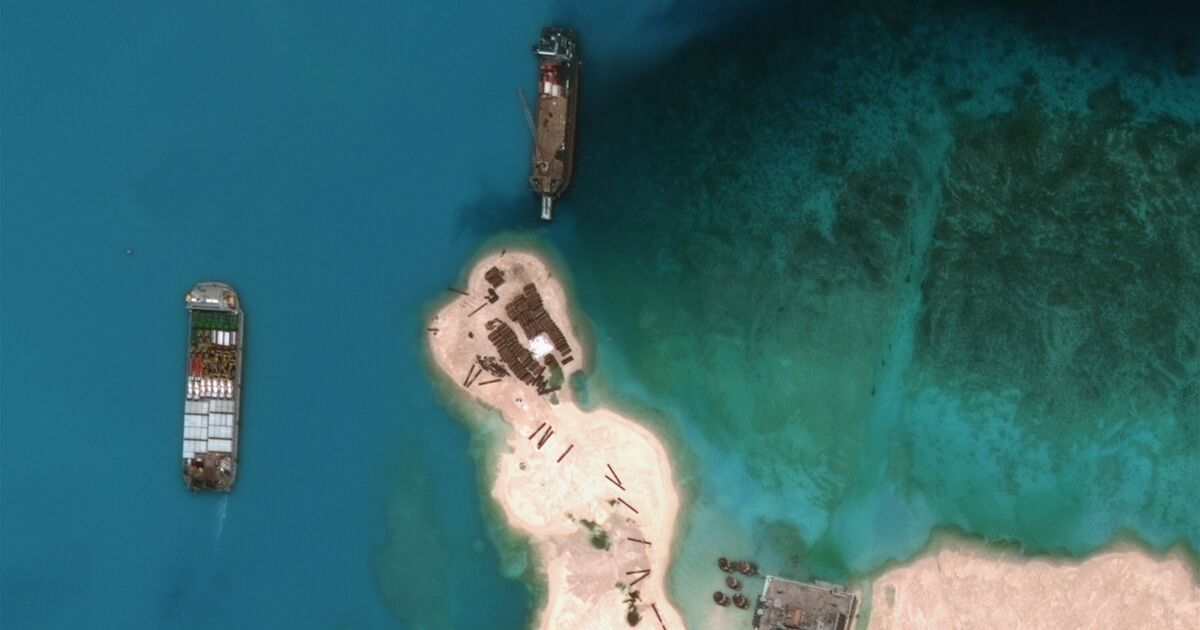For over a decade, China secretly turned an artificial island in the South China Sea into a large military base comparable to an unsinkable aircraft carrier.
Mischief Reef was a low-tide, ring-shaped island located in the Spratly Islands, one of the major archipelagos in the South China Sea. However, China had started reclaiming land around its rim in the 1990s, which was largely completed around 2015.
China claims sovereignty over more than 80% of the South China Sea, an energy-rich waterway that sees as much as $5 trillion in trade each year.
The Spratly Islands are part of these claims, as Chinese marine excavators have created more than 3,000 acres of new land across seven reefs. The archipelago is also partially claimed by Vietnam, the Philippines, Malaysia, Taiwan, and Brunei.
What is Mischief Reef?
Mischief Reef and at least two other features, called the Subi and Fiery Cross reefs, have been equipped wth military infrastructure from airstrips to missile launchers, giving the People’s Liberation Army the ability to protect power within the region.
Mischief Reef is located approximately 150 miles west of Palawan, a major Philippine island province, and about 600 miles from China’s island of Hainan — the country’s southernmost island.
It lies within the exclusive economic zone of the Philippines, allowing the country to use its natural resources under international maritime law.
China began to occupy Mischief Reef in 1994, claiming that the area was used to aid fishermen.
DON’T MISS…
Despite Chinese President Xi Jinping‘s promise to then-U.S. President Barack Obama not to militarize the island’s outposts, many experts have noted the military infrastructure in place, such as a 10,000-foot runway, helipads, fighter jet hangars, and anti-ship cruise missile systems.
Also known as Meiji Reef in Beijing and in the Philippines, the island provides major support to Chinese forces as they expand their military reach in the Philippines’ waters.
Asian leaders hit back
In response, Filipino President Ferdinand Marcos Jr. has pushed back against Chinese presence, strengthening its defense coordination with the U.S. and other allies in the area. The island is expected to remain an integral part of China’s maritime operations in the South China Sea.
“China can [through its radar systems on artificial islands] see and hear and communicate across the whole South China Sea in a way that nobody else, including the United States, can,” said Gregory Poling, director of Washington, D.C.-based think tank CSIS Southeast Asian Program.
Gilberto Teodoro, the Philippine defense chief, said there was a “trust deficit” with China during the Shangri-La Dialogue summit in Singapore in June.
“I just look back to 1995 in a place called Mischief Reef. There were a few bamboo structures erected there,” he said, adding that China claimed these were “temporary havens for fisher folk. Now you have artificial military islands—heavily militarized.”


![[News] China’s GPU Trio Rise as NVIDIA Retreats — Decoding Moore Threads, MetaX, and Cambricon](https://news.charm-retirement.com/wp-content/uploads/2025/10/Moore-Threads-624x394.jpg)